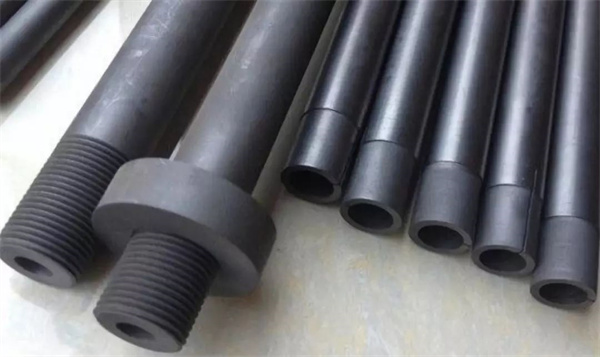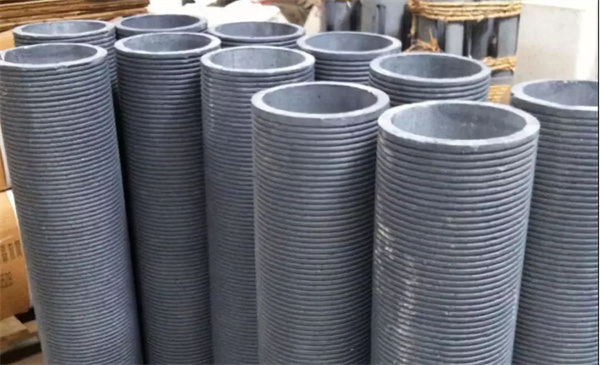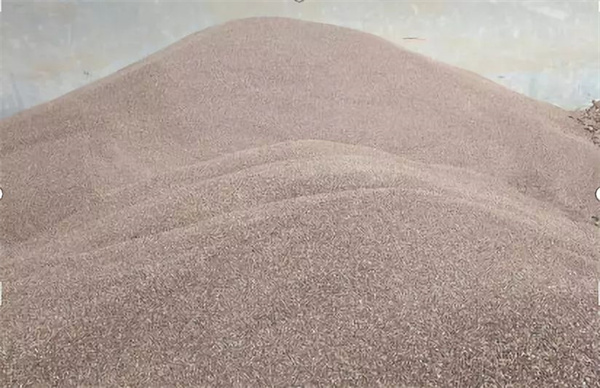Email: info@karssenmetal.com Tel: +86 18147353336
In theory, any substance can burn as long as it reaches a certain temperature, and there is no absolute fire resistance. From this point of view, all basic materials whose physical and chemical properties allow them to be used in high temperature environments are collectively referred to as refractory materials.
Refractory materials are widely used in various fields of global economy such as metallurgy, chemical industry, petroleum, machinery, etc. Among them, graphite, silicon carbide and magnesia products are the most common refractory materials.
Graphite products (except natural graphite) are obtained by graphitizing carbonaceous refractories in a resistance furnace at 2500-2800°C.
Graphite products have the advantages of small thermal expansion coefficient, large thermal conductivity, high temperature strength, good thermal shock resistance, stable chemical properties, light weight, acid, alkali, salt corrosion resistance, and no wetting of metals and slag. Graphite products are mostly used as the reaction tanks in metallurgical industry and the lining of autoclave in petrochemical industries, and are used to make corrosion-resistant heat exchangers and masonry high-temperature furnaces.

Silicon carbide products are produced by silicon carbide sand as aggregate and oxide, silicate or silicon powder as high-temperature bonding material through forming and baking process.
Because the main crystalline phase is mainly silicon carbide, many properties of the product depend on the properties of silicon carbide. In this type of refractory product, silicon carbide is a barren material, which must be bonded as a whole by a binder, so the properties of the binder and the bonding types also have a considerable impact on the properties of the product. Common bonding types are: clay bonding, oxide bonding, mullite bonding, silicon nitride bonding, recrystallization and reactive sintering silicon infiltration.
Silicon carbide products have high thermal conductivity and are widely used in the manufacture of various heating furnaces, pipes and large bricks, indirect heating furnaces, etc.
Silicon carbide products have good mechanical strength and wear resistance, and can be used to manufacture mechanical wear resistant parts, including linings for low-temperature guide rails, cyclones, and dust collectors.
The excellent chemical properties of silicon carbide products make it perform well in various kilns and devices in the non-ferrous metallurgy and chemical industries.

Magnesia’s main component is periclase Mg0. It is a product obtained by high temperature sintering of magnesite raw materials such as magnesite and hydrate. Magnesia can be subdivided into: sintered magnesia, fused magnesia, seawater magnesia and so on.
The magnesia sintered from natural magnesite as the raw material is called sintered magnesia; The material formed by smelting magnesite and other raw materials in an electric arc furnace to a molten state and then cooling is called fused magnesia.The magnesia which is extracted from seawater is called seawater magnesia. At present, magnesia is mainly obtained from magnesite calcination or electrofusion in China, while Japan and Western European countries mainly extract it from seawater.
Magnesia has strong hydration resistance and good resistance to alkaline slag and iron slag. It is mainly used to make basic refractory materials (such as magnesia bricks, magnesia alumina bricks), used in open hearth furnaces, oxygen-blown converters, electric furnaces, non-ferrous metal smelting and some high-temperature thermal equipment. And periclase is one of the common minerals in cement clinker, which can coexist with 29 main minerals in cement clinker. Therefore, magnesia has extremely good corrosion resistance to cement clinker.

A brief application example of graphite and silicon carbide refractories
In the electrolytic aluminum industry, the carbonaceous tank bottom is usually used as the cathode of the aluminum electrolytic cell. Although the carbonaceous material has good electrical conductivity, but its corrosion resistance ability to cryolite, NaF and molten aluminum is weak at high temperature (1000 °C), which need to be replaced frequently. The reaction formula is as follows:
3NaF·AlF3+Al═3Na+4AlF3
The research shows that the penetration of Na decreases with the increase of the degree of graphitization of the carbon cathode, so the cathode material of the aluminum electrolytic cell is developing towards the direction of graphitization. The surface of the graphite cathode can also be coated with a coating (such as TiB2) with good wettability with aluminum liquid and excellent conductivity to increase the conductivity and corrosion resistance.
SiC does not react with metal fluorides, resists cryolite erosion, has good oxidation resistance, high strength, and high resistance. SiC refractory materials are used to build side walls. It not only prolongs the life of the electrolytic cell and prevents leakage, but also reduces the thickness of the lining and enlarges the volume of the cell.
Isostatic graphite blocks are an important graph
Graphite rotor belongs to graphite material, whi
Graphite sheets have many important roles in the
Contact: Bateer
Phone: +86 18147353336
Tel: +86 18147353336
Email: info@karssenmetal.com
Add: Room D204-2203, Innovation Building, Baotou Light Industry Vocational Technical College, 19 Jianhua Road, Qingshan District, Baotou City, Inner Mongolia, China.